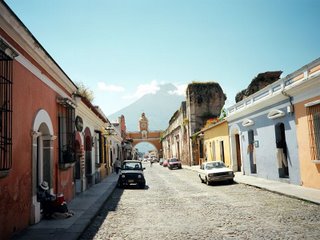
Hola
Disclaimer. During august, Agdes will be a travel blog. Although I’ll write about agriculture in Central America, I will also describe my trip around Guatemala, Honduras, Salvador, and Nicaragua. As some of you know, three days ago Kate and I started our trip throughout Central America. First stop: Guatemala, a country filled with beauty in culture and landscapes. Although the capital, Guatemala City, has a reputation for being unwelcoming, infested with pollution, and crime, we found it quite pleasant. The climate is very nice, mid-70´s with an enjoyable breeze in the afternoon.
Guatemalans are extremely nice and they’re the best source of information when it comes at what places to visit and what to avoid. The city is divided by zones; we stayed in Zone 1 the city centre. A little scary at night because is fairly empty, but during the day there are several churches, museums, plazas, and markets to visit.
The bohemian scene can be found at¨4 Grados Norte¨ and ¨100 Puertas¨. The first one is two blocks of cafes, bars, and cultural centres. The second a little hallway with some Cuban Trova and Spanish rock bars. There are also two excellent museums to have a better understanding of the Maya culture. The first one, Popol Vuh, is an archaeological museum divided by the different periods of the Maya. The second one, the Ixchel museum, puts more emphasis on the Mayan textiles and its meanings.
So, if you’re planning to come to Guatemala, spending a couple days in the capital is definitely worth it. Just don’t forget the universal rules of carrying little cash, avoid bad neighbourhoods and ASK the locals.That’s all for now. Stay tuned for pictures!!! Saludos RAFA
